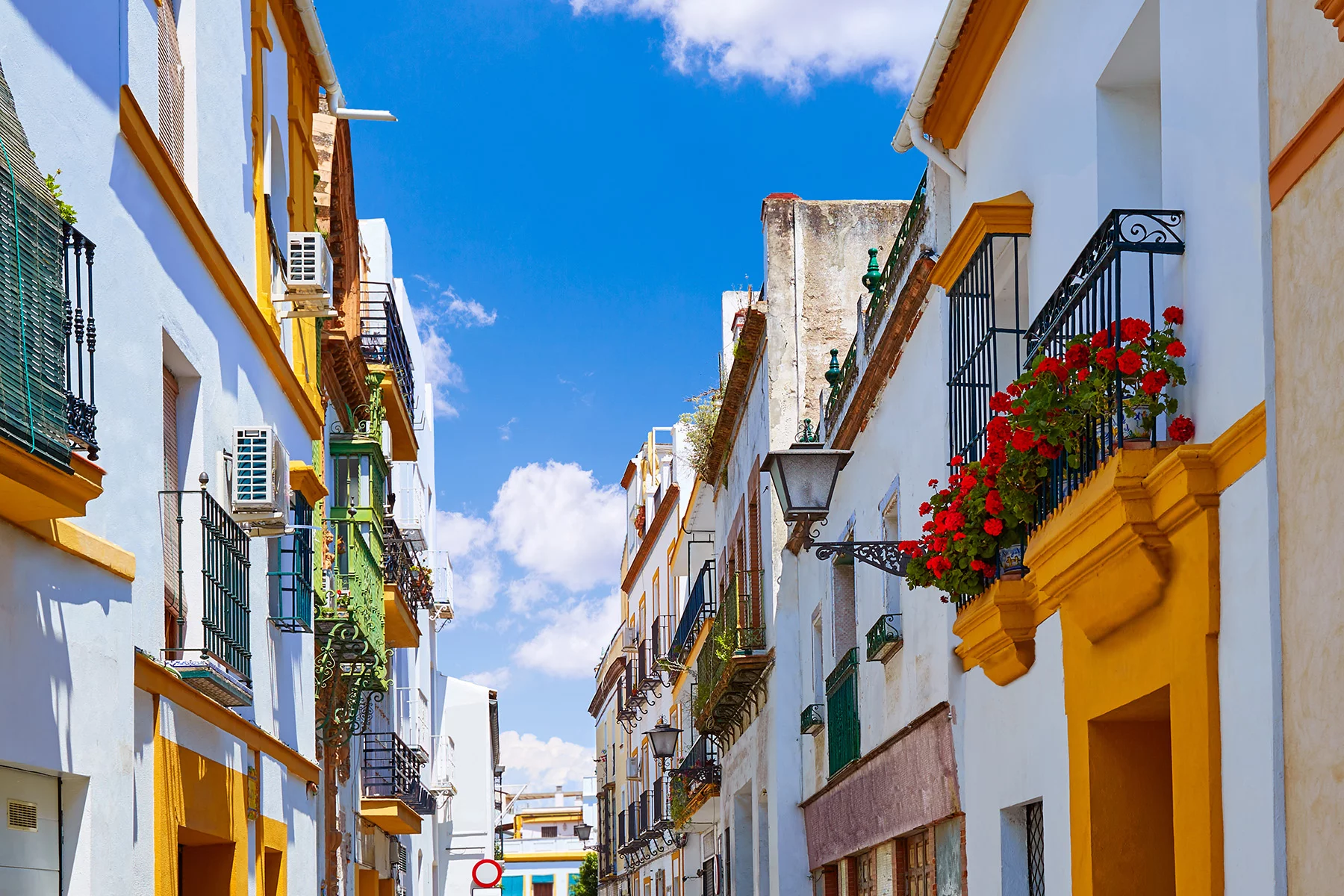If you’re considering a move to Spain, Madrid offers an irresistible mix of the old and new, buzzing with life at all hours. The capital city has more than 100 different neighborhoods, all offering their own unique experience, and is the perfect place for expats to dive into the Spanish way of life.
Discover the best areas for international living in Madrid in the following sections:
Mortgage Direct
Ready to buy your dream home in Spain? Mortgage Direct offers exclusive mortgage deals and simplifies the process for international buyers. Invest safely and profitably. Make your Spanish property dream a reality and contact Mortgage Direct today.
Why move to Madrid?
There are plenty of reasons to consider Madrid as a destination when moving to Spain. For a start, as the Spanish capital, it’s a treasure trove of history, culture, and gastronomy. Renowned for landmarks like the Royal Palace, the Museum del Prado, and the bustling Puerta del Sol, Madrid’s culture is as rich as its churros y chocolate.
And don’t forget the world-class art, Flamenco shows, and the electric energy of Real Madrid football matches.
Geographically, Madrid is in the heart of Spain. The city of 3.3 million residents (2023) is divided into several districts, each with its own distinct flair — from hip bars and galleries in Malasaña to the upscale boutiques of Salamanca.
Madrid has been the center of Spanish politics and administration since it became the capital in the 16th century. Over the years, it has been the stage for major global events, including the Napoleonic occupation and the Spanish Civil War.

These days, Madrid is also the business hub of Spain. It’s a leader in sectors like finance, technology, and services. The city is home to numerous multinational corporations, which attract professionals from around the world.
Also adding to the appeal is Madrid’s high quality of life, which is generally more affordable than other western European capitals. It boasts an extensive and low-cost public transportation system that includes the subway, light rail, buses, and suburban trains (Cercanías).
Madrid is considered LGBTQ-friendly, with an annual Pride event that’s one of the largest in Europe. Accessibility for people with disabilities is continually improving, though like many old European cities, some areas are challenging.
How to find housing in Madrid
The most common way to find housing in Madrid is through a real estate agent (inmobiliarias) or online portals. Popular real estate websites for renting and purchasing housing in Madrid are:
Although Madrid is one of the more affordable western European capitals, housing costs can still take a big bite out of your budget. You’ll encounter some of Spain’s highest prices per square meter for residential property, second only to Catalonia and Barcelona.
Still, costs can vary widely depending on the neighborhood. If you’re looking for real estate deals, you’ll probably want to concentrate your search effort in the south and southeast of Madrid. You’ll pay premium prices to live in the east/northwest area of the city center.
Typical accommodation in Madrid
Housing in Madrid ranges from social residences to luxury penthouses with eye-watering price tags. You’ll also encounter many architectural styles, from classic Spanish and Moorish influences to sleek, modern designs.
The vast majority of Madrid’s housing is apartments (apartamentos or pisos), which could be anywhere from 40 to 100 square meters in size. They might include a small balcony. Outdoor communal spaces like courtyards are also common in many residential buildings. On the other hand, suburban areas have a mix of apartment complexes and detached houses with small gardens.
Renting in Madrid
The Madrid housing market has traditionally been more inclined towards buying rather than renting. However, this trend has seen some shift over recent years, especially among younger residents. Most rental properties in Spain are owned by private individuals.
Here are some popular websites for finding rental apartments in Madrid:
Spotahome
Looking for somewhere to rent in Madrid? Spotahome takes the hassle out of househunting by doing the hard work for you. Their online platform lets you find, view, and book rental properties all from the comfort of your own home. Take the stress out of househunting in Madrid with Spotahome.
Buying in Madrid
Since the country has no restrictions on foreigners buying property, many expats choose to buy a home in Spain. That said, it’s a big investment, especially considering that real estate in Madrid is almost double the price as less popular Spanish provinces.
According to recent statistics from Idealista, the average cost of a Madrid apartment (in Spanish) is €4,268 per square meter (February 2024). Furthermore, Spain’s high property gains tax can diminish your investment if you plan to sell in a few years.
When buying a property in Madrid, it’s useful to work with a mortgage adviser who knows the market. For example, Mortgage Direct provides tailored services to expats.
Districts and neighborhoods in Madrid
Officially, the city of Madrid is divided into 21 districts, which are further divided into 131 neighborhoods (barrios). Each district has a District Municipal Board (Junta Municipal de Distrito) and a town hall (ayuntamiento) that administers municipal services for local residents.
The historic core of the city is called Centro and includes the iconic square Plaza Mayor, Gran Via shopping street, and the impressive Royal Palace. The entire city and surrounding areas are connected by a world-class public transit system.
The Spanish upper class traditionally lived in the city center and in villas in the northern and northwest parts of the city. That’s why you’ll find grand, expensive houses in Salamanca, Chamberí, and Chamartín. Meanwhile, working-class families and immigrants lived primarily in the south and southeast districts. Villaverde is generally known for having more affordable housing.
Besides price, what else should you look for when deciding where you’ll live in Madrid? Read on to discover some of the most popular places for internationals and the main reasons people love calling these Madrid neighborhoods home.
Sol
If you want to feel the pulse of Spain’s capital, head straight to Sol. Often considered Madrid’s epicenter, this is a bustling area for tourism. Evenings out generally start at the iconic Plaza Mayor or Puerta del Sol, where people from all over the world gather.
Sol blends iconic Spanish historical sites with high-street brands and boutiques. Cultural attractions are plentiful, including theaters and world-renowned historic sites. The nightlife is thriving, with many bars and restaurants to choose from. Generally speaking, the lifestyle here attracts more singles and young couples rather than families.
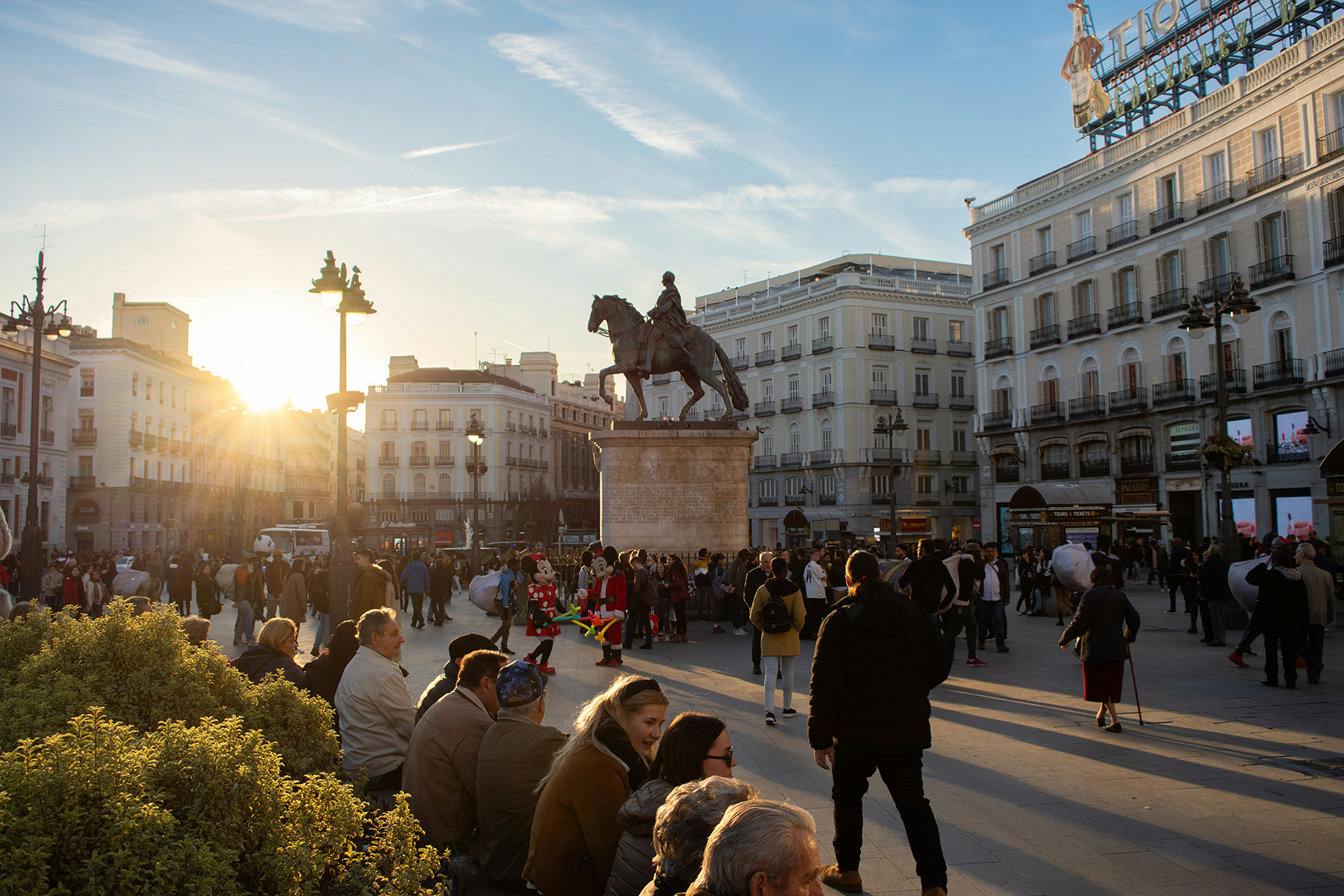
Since it’s a tourist-heavy area, you should stay aware of pickpocketing. That said, it’s generally a safe area. The main administration point is the Centro district town hall, also known as Centro Centro and Palacio de Cibeles – a stunning building that is a tourist attraction in its own right.
Several schools serve the local population. Main healthcare facilities include local clinics with larger hospitals in nearby neighborhoods. Getting around by public transit is easy from the Sol Metro station, but car parking is scarce and expensive.
Malasaña
Head north of Sol for Malasaña, the Bohemian heart of Madrid. This central neighborhood is young and trendy, with a more relaxed vibe and cheaper rent compared to Sol. It’s the place to go for street art, vintage shops, quirky boutiques, and an energetic nightlife. The expat community is growing here, especially among artists, freelancers, students, and young professionals. It has relatively low rent prices for a central Madrid neighborhood.
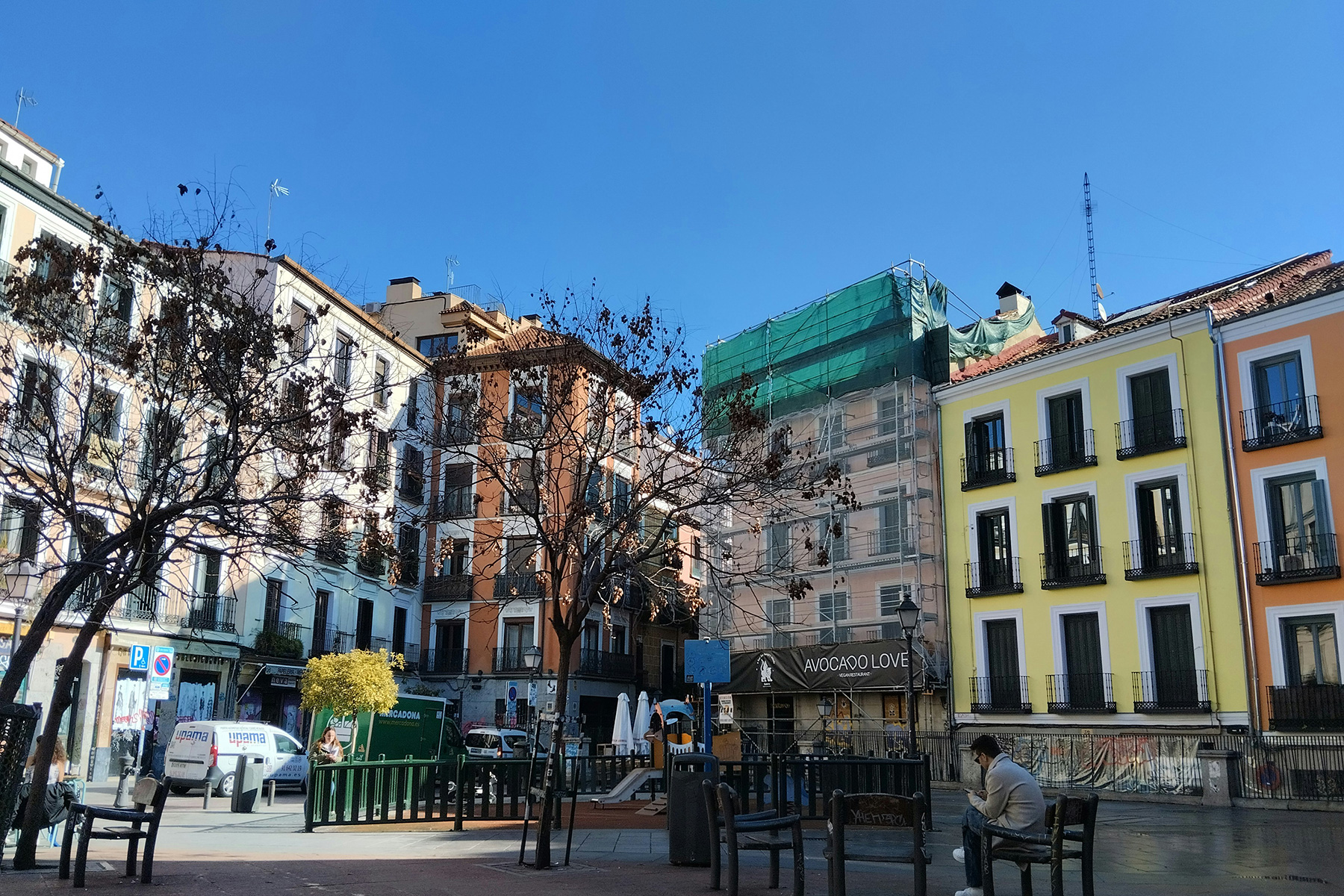
While Malasaña lacks expansive parks, small squares like Plaza Dos de Mayo are great for relaxing and meeting with friends. The area is peaceful during the day and really wakes up at night. It has several schools that serve the neighborhood and good access to healthcare facilities. Commuting is convenient with the Noviciado Metro. Overall, Malasaña is a safe neighborhood, but pickpocketing can be an issue.
Chueca
Another central neighborhood, Chueca, is known as the LGBTQ+ hub of Madrid. It’s vibrant and inclusive, and the nightlife is legendary. Every June, the Chueca hosts the famous gay pride festival Día del Orgullo de Gays. Expats and locals move to this neighborhood for an exciting, international environment.
The central Plaza de Chueca, Mercado de San Antón, and Gran Via are busy social hubs. Shopping is diverse, from high-end boutiques to local shops. You can also enjoy theaters and art galleries. Of course, the neighborhood is packed with cafes, bars, and clubs. While it is more quiet during the day, it can be raucous at night.

Administration falls under the Justicia district. Several schools and healthcare facilities serve residents. The Chueca Metro makes commuting easy, but parking is challenging.
La Latina
If cobblestone streets, stunning plazas, and bustling tapas bars are calling you, look no further than La Latina. It’s a prime location for expats who want to live near the city center and immerse themselves in authentic Spanish culture. This area is especially popular with the younger crowd and those who like being out on the town. Apartments are typically in older, historic buildings and a bit pricey.
La Latina is convenient for socializing and accessing local amenities. Its retail offering includes a variety of boutiques, specialty shops, and the famous El Rastro market, known for antiques and second-hand items. The area boasts several small theaters and galleries, adding to its artsy ambiance.
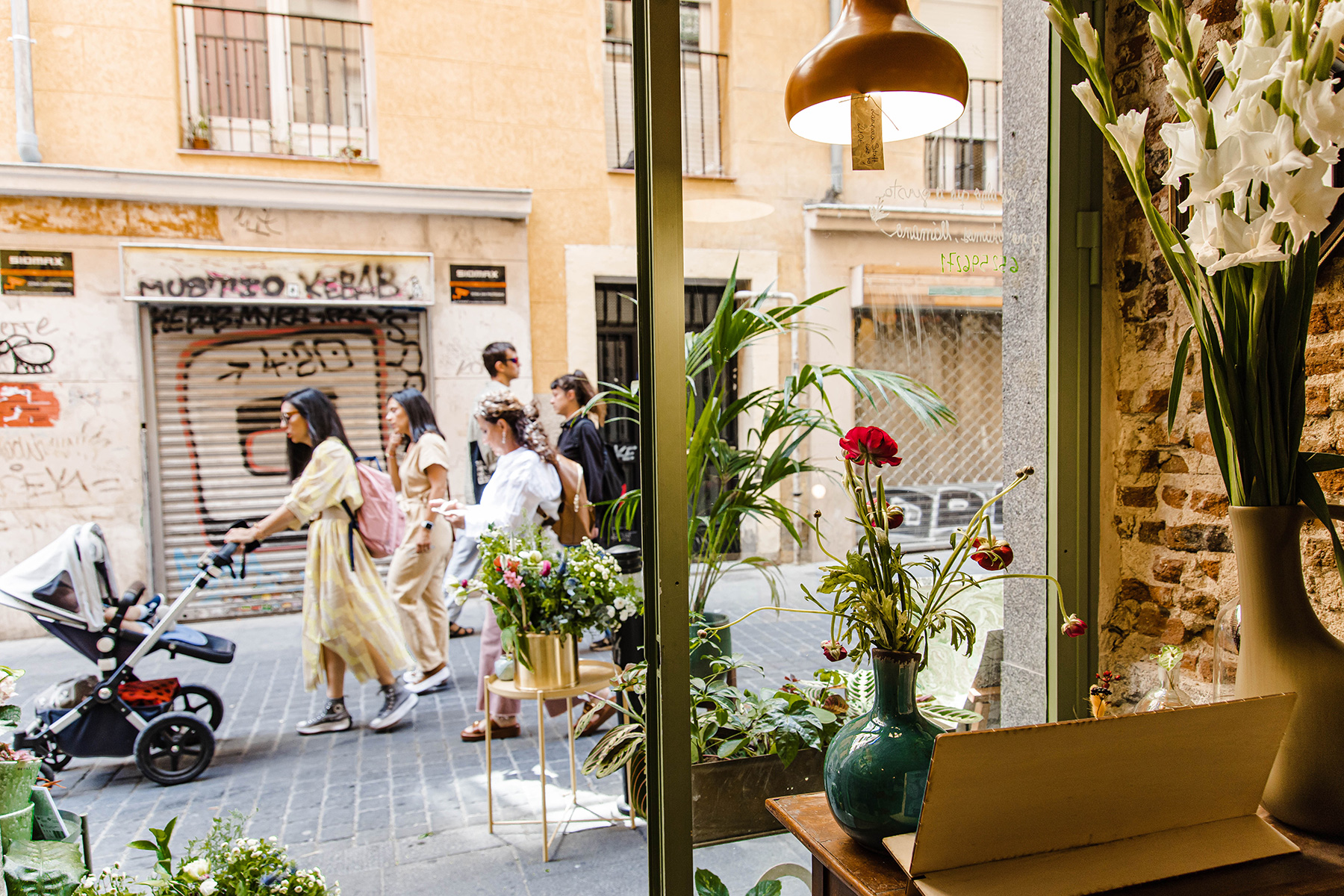
Its busy restaurants, pubs, and tapas bars make it a weekend favorite for both locals and expats. One drawback is the lack of green spaces, but it compensates with charming squares like Plaza de la Paja and Plaza de la Cebada.
Healthcare and educational facilities are also within convenient reach in adjacent neighborhoods. In fact, most of Madrid’s main attractions are within walking distance or a short metro ride. Parking can be difficult due to its busy streets and limited spaces. Crime rates are generally lower compared to other major city centers, but watch out for pickpocketing in Rastro market and other busy areas.
Lavapiés
Lavapiés is conveniently located just south of Madrid’s city center. Residents choose this Centro district neighborhood for the dynamic and eclectic atmosphere. It’s one of the city’s most diverse neighborhoods – home to significant African, Arab, and South Asian communities.
Love international cuisine? Then feast your eyes on the smorgasbord of restaurants serving up food from all over the world. This neighborhood also has a vibrant nightlife plus several art and culture venues. For shopping, you’ll have your choice of small shops, boutiques, and the popular San Fernando Market. Open spaces like Casino de la Reina park provide locals with places to be active and relax outdoors.
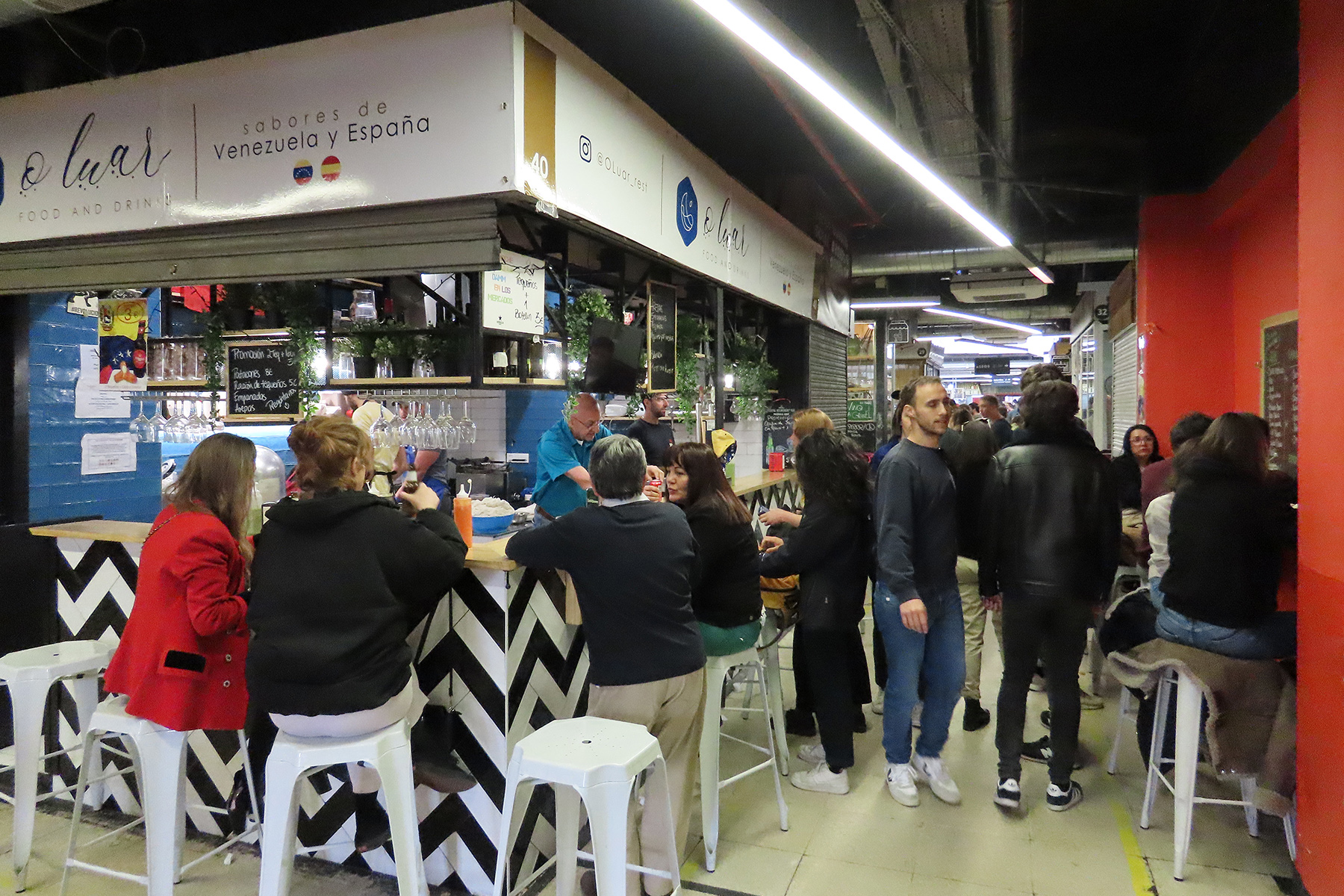
Families that choose this neighborhood should be ready to embrace an atmosphere that is generally louder and busier than other areas known for being family-friendly. Those that do will find both public and private schools throughout the neighborhood. Quality healthcare is also easily accessible.
Commuting overall is convenient, as it’s just a 10–15 minute Metro ride to Centro. Parking a car in this area isn’t the most practical choice. The crime rate has generally been slightly higher than other areas of Madrid, primarily due to drug trafficking.
In short, Lavapiés is best suited for those seeking a buzzing central location and cultural diversity. As an added bonus, rent tends to be less expensive here than in other central neighborhoods.
Salamanca
Known for its beautiful 19th-century architecture and tree-lined streets, Salamanca is an elegant and upscale neighborhood in the northeastern sector of the city center. This neighborhood is perfect for families and established professionals seeking a polished and luxurious lifestyle, rich in amenities and high-end services – all at a premium price.
Many expat families move here for its prestigious educational institutions and international schools. It’s also one of Madrid’s safest areas. Luxury boutiques, art galleries, and fine dining restaurants line its famous streets, including Calle Serrano and Calle Velázquez. Green spaces, such as Eva Duarte de Perón Park, add a touch of nature.
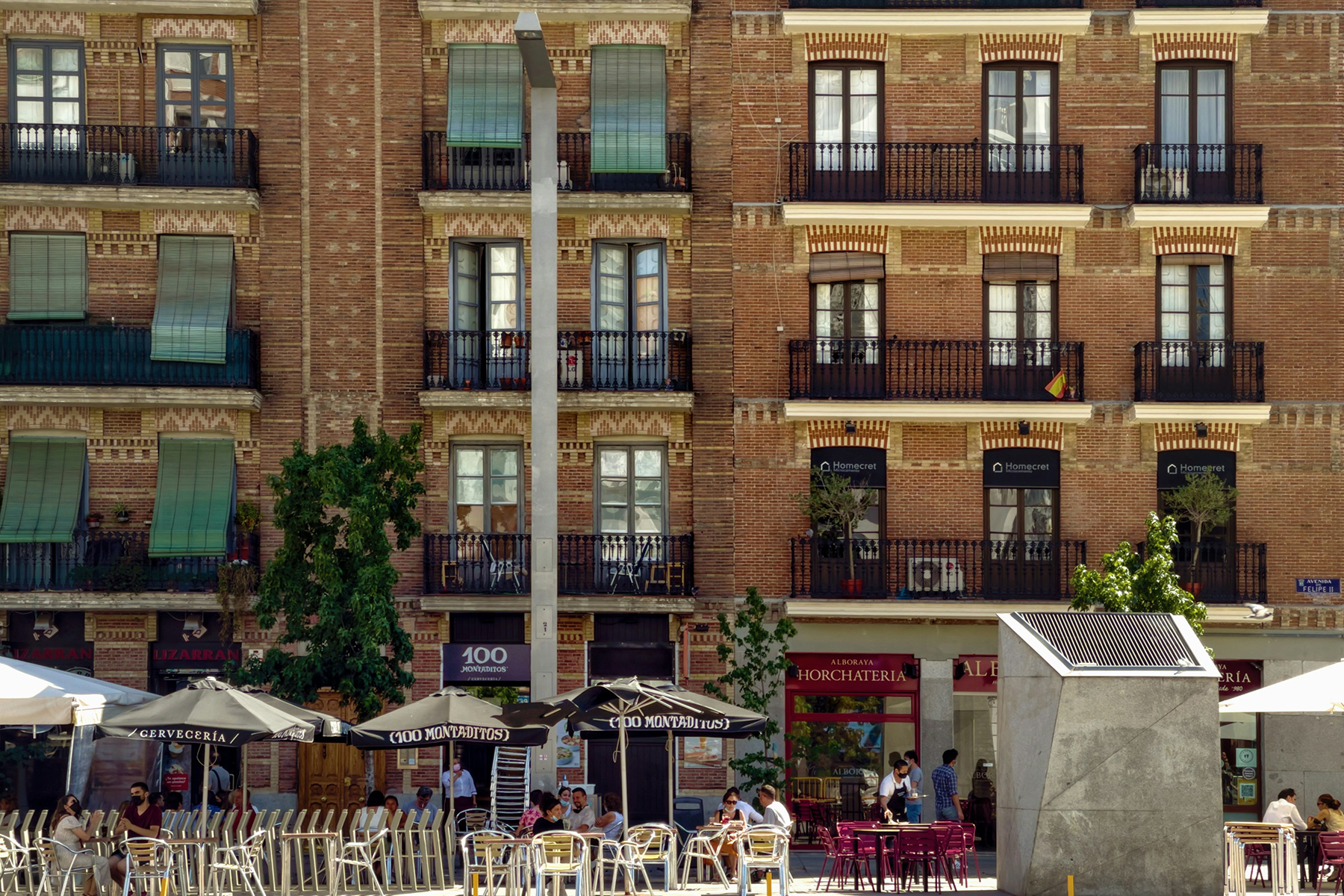
While not the center of Madrid’s arts scene, you can find a number of small galleries, theaters, and performance spaces. For dining, Salamanca offers an array of gourmet experiences, from traditional Spanish fare to international cuisine. Nightlife is more refined, with elegant bars and upscale clubs.
Residents can access city services from the Junta Municipal del Distrito de Salamanca (website in Spanish). The top-notch Quirónsalud Madrid University Hospital is also in the neighborhood. Local employers include companies in finance, law, and luxury retail.
Parking can be expensive and limited, so a private parking spot is a bonus. That said, the well-connected metro stations and bus lines make commuting a breeze.
Chamberí
Nestled in the heart of Madrid, Chamberí is a quintessentially madrileño neighborhood with traditional charm and modern amenities. The area feels like a village, yet it’s well-connected to the city center. The residents are a mix of internationals and locals, primarily young families and professionals.
Chamberí features beautiful architecture shaped by the city’s upper class in the 19th and 20th centuries. The most elegant neighborhood is Almagro, with grand buildings, embassies, art galleries, and excellent dining options. Overall, the neighborhood is family-friendly, relaxed, and community-oriented.
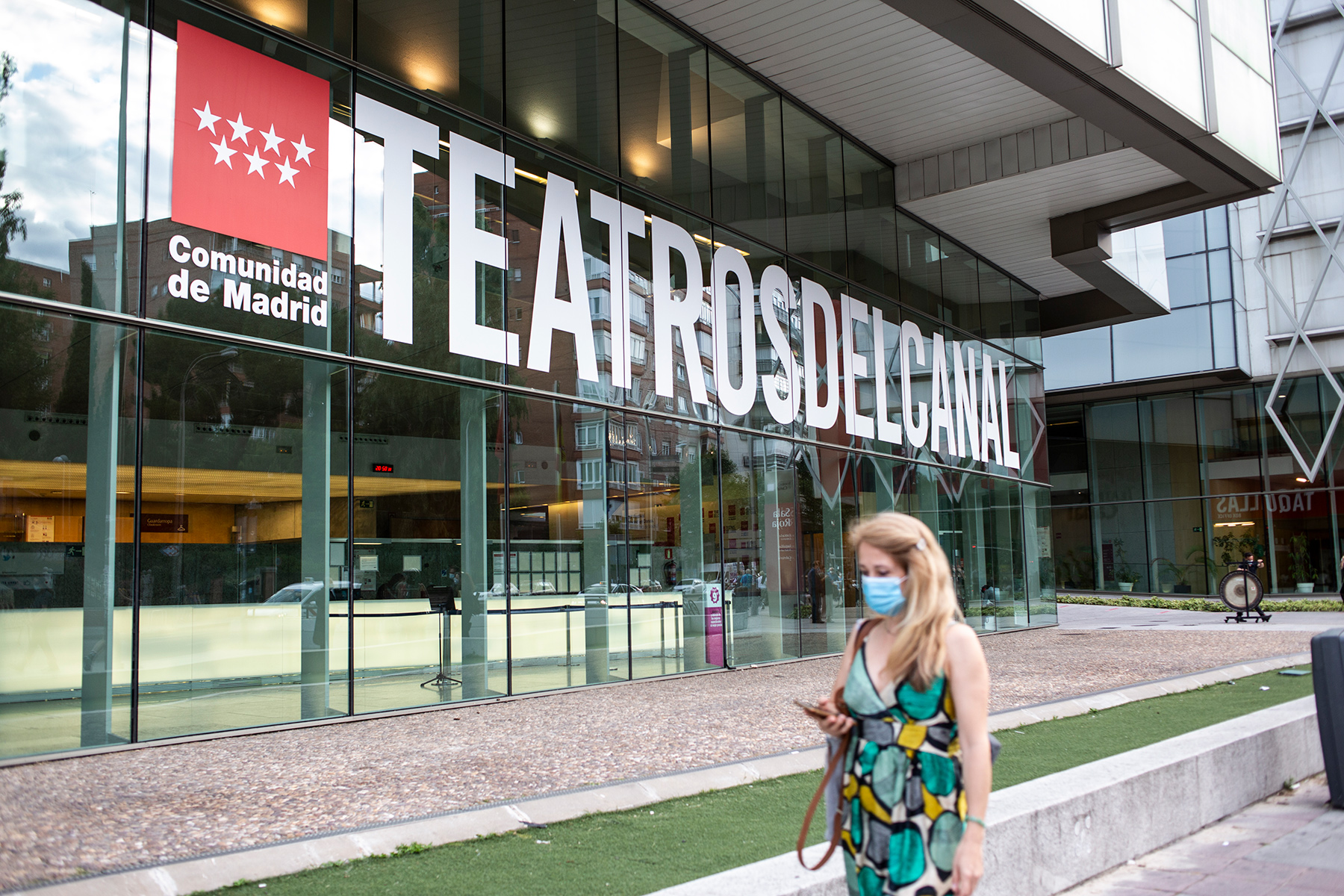
Parks like the Parque de Santander provide open spaces for relaxing and recreation. Most apartment buildings feature communal gardens and swimming pools. There are several well-regarded schools, both public and private, and the neighborhood is close to some of Madrid’s top universities.
For entertainment and nightlife, Chamberí has cultural venues like the Teatros del Canal. There are high-quality restaurants, charming cafés, and bars. That said, you’ll find the nightlife more subdued than in trendier neighborhoods. In terms of shopping, it has everything from large supermarkets to traditional shops and small boutiques.
The Junta Municipal del Distrito de Chamberí (website in Spanish) handles the neighborhood’s city services. You can easily access healthcare facilities, including the Clínico San Carlos Hospital. The area is well-connected by the Metro, and it takes 15–20 minutes to reach the city center. Parking can be hard to find, but not impossible.
Retiro
Southeast of Madrid city center is the green and peaceful oasis of Retiro. This charming and tranquil environment strikes a good balance between urban convenience and natural beauty. The crowning jewel of the neighborhood is the expansive El Retiro Park – recently named a UNESCO World Heritage Site.
Life in the city’s “green lungs” attracts both local and international families. The area offers various shopping facilities, from local markets to high-end boutiques. Dining options are abundant. Although Retiro doesn’t have a buzzing nightlife, it has its share of cozy tapas bars.
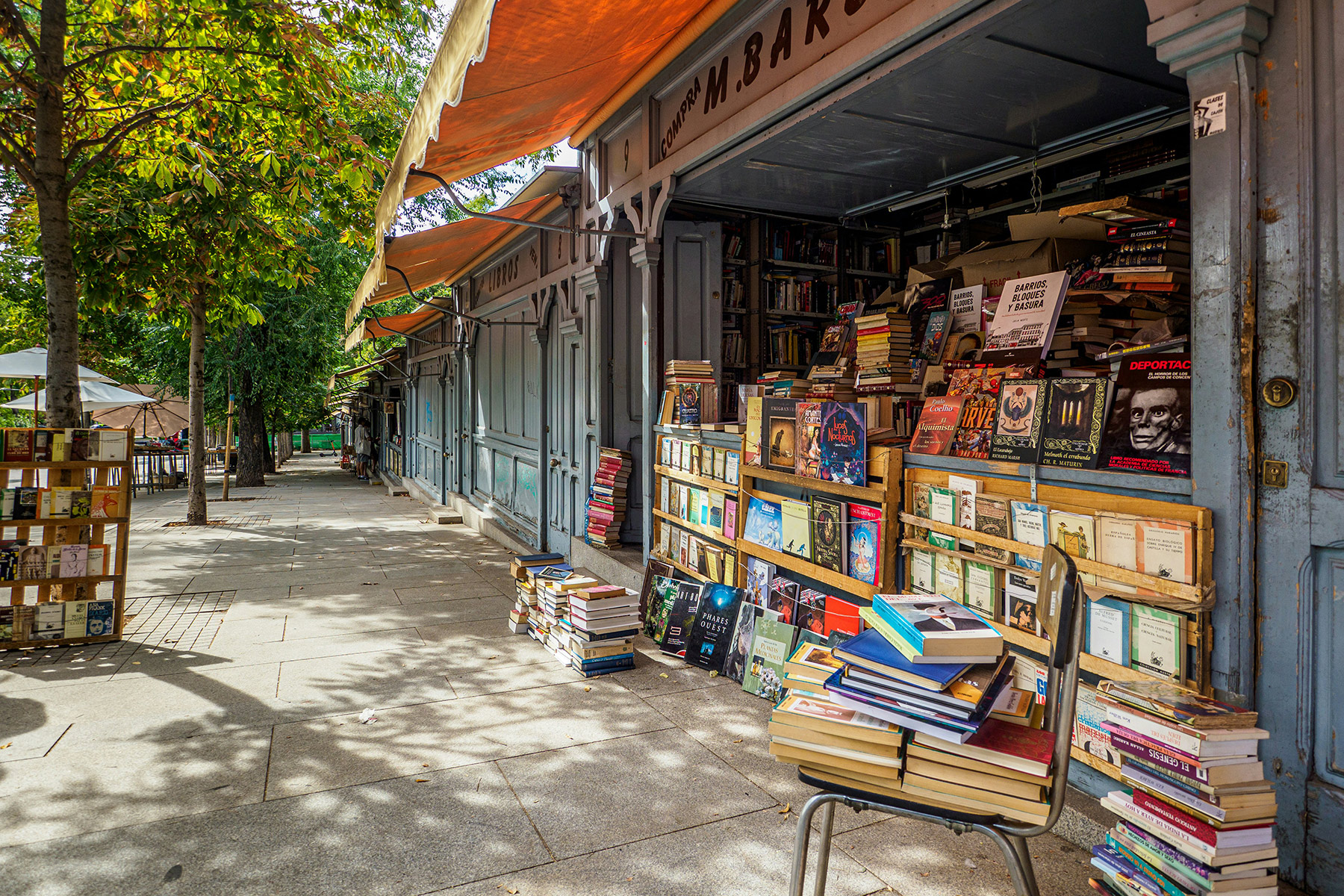
You’ll find several reputable schools in the vicinity and healthcare is also well-covered, with major hospitals like Hospital Gregorio Marañón close by. The main town hall overseeing Retiro is the Junta Municipal del Distrito de Retiro.
The city center is about a 15-minute metro ride away. Parking is slightly more accessible than in very central neighborhoods. Major local employers are in healthcare, education, and retail.
Tips on choosing a neighborhood in Madrid
Here are some essential tips and considerations for making the best decision on where to live in Madrid.
- Prioritize your needs and preferences – Before diving into the house hunt, consider aspects such as proximity to work or schools, the amount of space you’ll need, the amenities, and the overall vibe you prefer.
- Evaluate your budget realistically – Some areas in Madrid are more upscale, with higher rental and living costs, while others are more affordable. Ensure the neighborhood you choose aligns with your finances.
- Explore different areas in person – If you can, explore the neighborhoods, visit local shops and restaurants, and get a feel of the community and atmosphere during the day and at night. Madrid is generally a safe city, but some areas have higher instances of crime because they are very busy with tourism and nightlife.
- Get local expertise – You may want to contact a local real estate agent or relocation expert. They can provide insider insights, find suitable properties, and help you avoid missteps when buying or renting. You can also get valuable knowledge from other expats by joining Facebook and Meetup.com groups.
Useful resources
- Comunidad de Madrid – city government online portal with information in English
- Madrid.com – official tourism website
- Madrid City Council website – access the local district administration (in Spanish)




